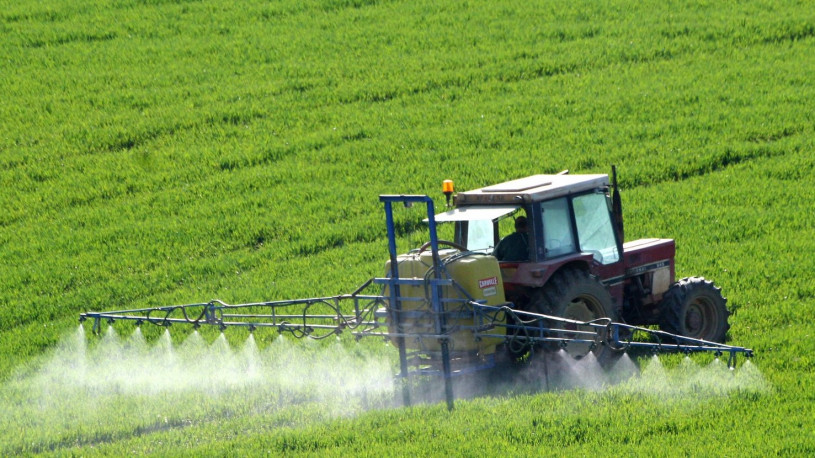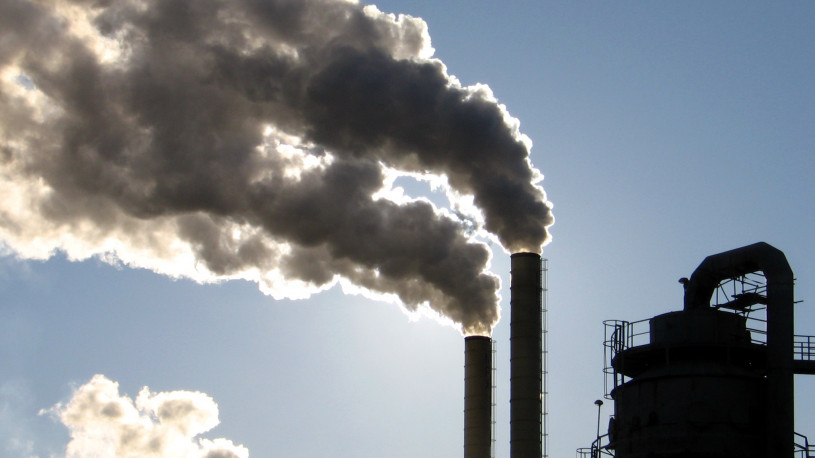-
The Only Thing to be Certain of in the Chemical Industry is Uncertainty
 Continue Reading
Continue ReadingThe chemical industry is facing uncertain times; the future price of oil is unclear, the major growth regions of the Far East are cooling, regional chemical legislation (such as REACH, TSCA, K-REACH, etc) is threatening to swamp the industry with red-tape, while the massive mergers of Dow/DuPont, ChemChina/Syngenta and others are creating research and production cuts across a range of sectors. And no one knows when all the changing will end.
At least that is the take-away package being offered by a recent PwC report on the future of the chemicals industry. A report that paints a gloomy picture for global economic growth, and warns that the chemical industry will face some difficult years ahead.
As the report states, “ The structural headwinds in the chemicals industry are blowing like a gale out of the global economy. In a funk since peaking in 2007, global economies have been unable to reach the 35-year GDP growth average of 3.5% in six of the past eight years. And the two years of ‘high’ growth were more of a bounce back from the sharp downturn of 2009 than precursors of a sustained turnaround.”
It continues to outline how this will impact the chemicals industry, stating, “Within a problematic macroeconomic environment, made worse for many multinationals by the strong dollar, demand for chemicals has fallen. Overall industry sales growth increased an anemic 2.1% in 2016 as the sector faced declining industrial production and broad inventory rightsizing by many of its customers. Chemicals companies that sell petroleum-based products often fell short of these industry averages because lower oil prices led to sharp top-line declines, sometimes in the range of 30% to 40%.”
Region by region, the report diagnoses challenging situations that no single chemical company can avoid or prevent. For example, it outlines economic fears in the US over the Trump administration’s protectionist stance. While the President has also proposed reducing the amount of red tape that businesses face, thus aiding domestic growth, any restrictions made on international trade will seriously impact the global chemical industry.
In Europe meanwhile, the UK is struggling to lessen the impact of Brexit, while at the same time trying to encourage growth. The rest of Europe has been experiencing economic stagnation for years, despite monetary easing, such that in general, the economic outlook for the European chemicals industry does not look too promising.
The same can be said of the Middle East, which is going through a period of massive change as Arab economies work out how to survive beyond oil. This has resulted in attempts to increase local production of non-oil manufacturing, as well as increase domestic demand. The chemical industry must find a new way to success in these changing economic times.
The Far East, and especially China, is the bright spot on the horizon for chemical traders, with a growth rate of 6%. However, even this economic boom is showing a downturn from the double digit growth of only a few years previously. Meanwhile, leaders there are hoping to change the economic model from a largely export based role, to one with increased domestic demand and consumption.
The chemical industry specifically, needs a process of adjustment, as PwC reports, “Margin pressures are increasing among domestic chemicals producers due to an overcapacity in basic commodities and in certain value chains (such as acrylonitrile-butadiene-styrene [ABS], a popular plastic used in manufacturing, and purified terephthalic acid [PTA], a polyester) as well as inefficient plants and processes.”
Outside of regional challenges, the chemical industry as a whole should prepare itself for the trend, from both consumers and producers, towards sustainable manufacturing. Increased levels of recycling and the further development of the circular economy will mean that many chemical manufacturers will need to develop more energy efficient processes or source chemical raw material sustainably if they are to grow.
As PwC notes, “With rare exceptions, chemicals companies can no longer depend on volume to drive growth. Structural weakness in most markets and recycling and reuse, which impact the sale of virgin materials, are combining to substantially reduce demand. Pockets of potential growth exist in new materials, such as biopolymers, which are renewable polymers produced by living organisms, but they are still some time away from reaching scale.”
The report also adds that, “In 2017, barring a recession in the U.S. and Europe or a slowdown in China, Moody’s Investor Service expects EBITDA (earnings before interest, taxes, depreciation, and amortization) in the chemicals industry to slip by 1 or 2 percent year-over-year.”
These are changing times, and while change is often something to be feared, it is better to see the challenges ahead than to step into the unknown. If the report is correct, then many chemical companies will need to make serious adjustments to their manufacturing methods, business models, and raw material sources. Maybe a downturn can be avoided, or maybe an adjustment in the market is needed. Unfortunately, the PwC report, like so many things in the chemical industry’s future, cannot be certain.
Photo credit: naturalnews.com
-
Chemist Creates the Raw Materials for Fertilizer at Five Times the Energy Efficiency
 Continue Reading
Continue ReadingA research chemist from Eindhoven University of Technology (TU/e) has developed a technique that could revolutionize agriculture. The new method coverts nitrogen from the atmosphere into NOx, the raw material for fertilizer, at a rate that is up to five times more energy efficient than current processes. With relatively low power usage, and only air as a raw material feedstock, the discovery could remove the need for large scale ammonia and nitrate manufacturing. In its place, more localized fertilizer production could be possible, even in remote areas of third world countries.
Developed as part of a research program in cooperation with Evonik Industries and the EU’s MAPSYN consortium, the novel process is already drawing interest from competing fertilizer producers. Meanwhile, other researchers are studying the possibility of using the process as a growth stimulant in greenhouses, or for storing sustainable energy in liquid fuels.
Given that current methods for the production of ammonia (NH3) or nitrogen oxide (NOx) for fertilizer manufacturing are responsible for about 2% of all global CO2 emissions, then any reduction in energy requirement is certain to be welcome. Researchers have already analyzed ways to reduce power consumption in the current process, but have generally concluded that the theoretical minimum has already been reached.
This led PhD candidate Bhaskar S. Patil to seek completely new ways to produce ammonia and nitrogen oxides. The result of which was two new types of reactor, the Gliding Arc (GA) reactor and the Dielectric Barrier Discharge (DBD) reactor.
Reporting on the breakthrough, the TU/e website explains how, “In his [Patil’s] experiments the GA reactor in particular appeared to be the most suited to producing nitrogen oxides. In this reactor, under atmospheric pressure, a plasma-front (a kind of mini lightning bolt) glides between two diverging metal surfaces, starting with a small opening (2 mm) to a width of 5 centimeters. This expansion causes the plasma to cool to room temperature. During the trajectory of the ‘lightning’, the nitrogen (N2) and oxygen (O2) molecules react in the immediate vicinity of the lightning front to nitrogen oxides (NO and NO2).”
While the process may sound a little high-tech for a small farmer in rural India, the results point to a potential game-changer for the fertilizer industry, and certainly an idea that is worth developing further.
Patil has already devised a highly efficient process, and could achieve much more, as the online journal, ScienceDaily, reports, “Patil optimized this reactor and at a volume of 6 liters per minute managed to achieve an energy consumption level of 2.8 MJ/mole, quite an improvement on the commercially developed methods that use approximately 0.5 MJ/mole. With the theoretical minimum of Patil’s reactor, however, being that much lower (0.1 MJ/mole), in the long term this plasma technique could be an energy-efficient alternative to the current energy-devouring ammonia and nitrate production.”
While at present, the idea has a lot of theory and not so much practical application, the chance to feed billions of hungry people, and help limit climate change at the same time cannot be ignored. Needing to lower both costs and environmental impact, fertilizer suppliers have been hoping for an improved production method for decades.
In answer to those needs, Patil, it seems, has developed a process from thin air that uses, as a fertilizer feedstock; thin air. With a five-fold increase in efficiency, and almost zero raw materials needed, can ammonia and nitrate manufacturers afford to ignore this discovery?
Photo credit: Photo: Bart van Overbeeke
-
Evidence of the Beginning of the End for Chemical Industry Growth
 Continue Reading
Continue ReadingThis is part 2 of a two-part article. To read part 1 click here.
A recent report by chemical experts at the McKinsey consultancy claims that there are numerous warning signs that the chemical industry may be entering a new era of restricted growth or contraction. In fact the authors note, “Some important indicators have changed over the past few years. While the industry’s 15-year performance still looks good, a closer look at the past five years is less favorable: not only have chemicals lagged the total stock market since 2011 in TRS performance but the industry’s return on invested capital (ROIC) performance has flattened, and for some chemical subsectors, decreased.”
And the report continues, by highlighting further proof of a sea change in the chemical industry, with the authors outlining the following points for consideration.
1 . The Global Playing Field is Leveling off.
Historically, the chemical industry has been localized, with products manufactured close to their markets. But regional mismatches in demand (such as the Chinese economic boom) or supply (cheap Chinese labour or shale gas deposits) have resulted in a more globalized industry. As these differences end (rising cost of Chinese labour, slowing down of Chinese economic growth, development of shale gas in other regions), the industry may well return to a more localized system. This will close another avenue of potential growth.
2. The Limit of the Specialty Chemicals Market.
The report believes that the specialty chemicals’ business model is under threat, noting that in the past, many chemical businesses that have found room for expansion and value creation by moving their product portfolios downstream may hit a wall for both product development and consumer need. As the report states, “The universe of specialties is not well defined and as a result is hard to quantify, but we think it is getting smaller. Innovation to develop new differentiated—and thus specialty—products has become a game of inches. With the exception of innovative crop protection, we would be hard pressed to name a single chemical blockbuster developed in the last ten years.”
3. Digitization.
The recent expansion in online trading websites, such as Alibaba, AG CHEMI group, and Spotchemi (who supports this blog), have speeded up the “commoditization of specialty chemical companies’ product and service offerings”. The report’s authors believe that such websites will become increasingly popular due to the advantages they provide buyers. Chemical manufacturers may lose price value as information on products becomes more available. As the report states, “Our skepticism about specialties is reinforced by our research, which shows that segment profitability already appears to be much more dependent on industry structure (in effect, the number of players) than on the technology content of companies’ offerings.”
4. Reduced Productivity Improvement.
On this topic, the report notes that, “The [chemical] industry is finding it increasingly difficult to hold onto the benefits of its productivity-improvement efforts. Paradoxically, this is happening just when advanced analytics and digital approaches are creating a new wave of opportunities to accelerate productivity gains.”
5. Circular Economy.
The modern consumer lives in a throw-away world, full of single-use, plastic bags, disposable pens and diapers, individually wrapped cheese slices, and plastic window frames. All of these products are dependent on the chemical industry. As society further embraces the ‘circular economy’, reduced use, increased recycling, and a better understanding of mankind’s impact on climate, then the industry that will suffer the most from this new approach is the chemical industry.
In conclusion, it is interesting that the industry journal ChemInfo recently reported that, “Just nine of the top 50 [chemical] companies reported sales increases last year, including just one of the 10 largest chemical makers — PPG Industries at no. 4.” They also reported that, “Market leader Dow Chemical reported a decline of at 1.3 percent, followed by a 7.4 percent decline from no. 2 ExxonMobil and a 4.9 percent slide by third-ranked DuPont. Praxair rounded out the top five with 2.2 percent lower sales.”
Meanwhile, recent analysis by the renowned chemical journal C&EN, noted that, “The top 50 chemical firms combined for $259.9 billion in sales in 2016, a 5.6% decline from the amount the same firms posted the year before.” It also noted that, “Income also declined. The 44 firms among the 50 that report profits combined for $33.6 billion in operating income, a decrease of 9.6% versus the year-ago period.”
Should we be surprised by these figures, or is this the first step in a trend; a new era of limited chemical industry growth, and possible contraction (as McKinsey reports)?
While there are still many questions to answer about the arguments that the McKinsey authors make, such as which sectors will be worst hit, and how can chemical manufacturers survive a future contraction , there are many chemical traders who will read the report and simply wonder, “Should we be worrying about the chemical industry’s future?”
Photo credit: sciencesmith
